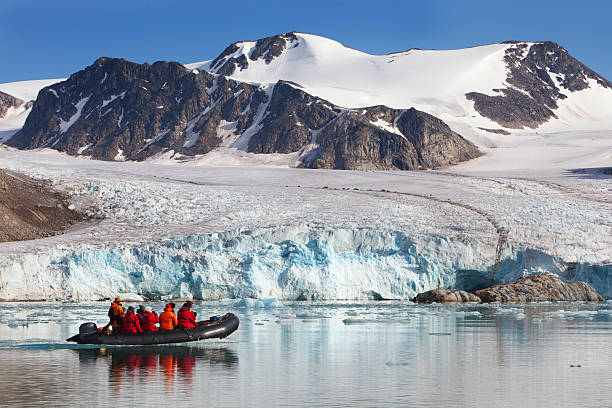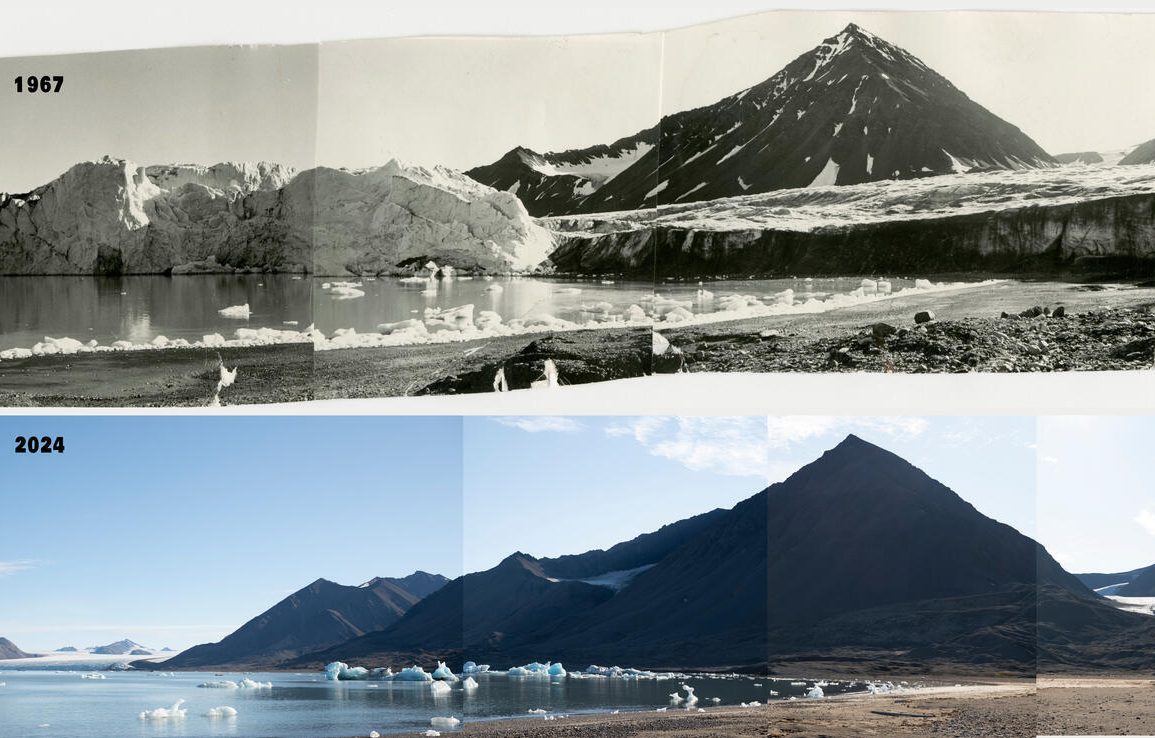Photographer Christian Åslund’s recent visit to Svalbard’s glaciers highlights the stark reality of climate change.
In 2002, Åslund was asked by Greenpeace to document the retreat of glaciers in the Arctic, using photographs from the early 20th century as a benchmark.
The difference between the two sets of images was striking, revealing the rapid melting of ice in a region that has felt the brunt of global warming.
Åslund’s latest photographs, taken in August 2024, show a further alarming reduction in glacier mass.
In the past 22 years, the glaciers have shrunk significantly, far surpassing the initial retreat he witnessed two decades ago.
“It was shocking to see how much ice had disappeared,” he says, reflecting on his return to these same locations.

This dramatic change, especially visible in comparison with archival images from the early 20th century, underscores the urgent impact of global heating.
The Arctic region, including Svalbard, is warming faster than most of the planet, with temperatures rising by 4°C over the last 30 years.
his unprecedented heat has caused glaciers to melt at their fastest rate on record. In one instance, Svalbard lost 55mm of water equivalent in just one day—five times the normal rate.
Despite the overwhelming evidence, Åslund remains hopeful, believing that collective action can still reverse some of the damage.
He emphasizes the importance of individual efforts in reducing carbon footprints and raising awareness.
Åslund’s photographs serve as a powerful visual reminder of the urgency of addressing the climate crisis, urging both the public and governments to take drastic action before the glaciers vanish entirely.
Åslund hopes that his images, which were once met with skepticism, will inspire a stronger global response to the climate crisis. As the glaciers continue to disappear, he remains determined to use his photography to advocate for change.

